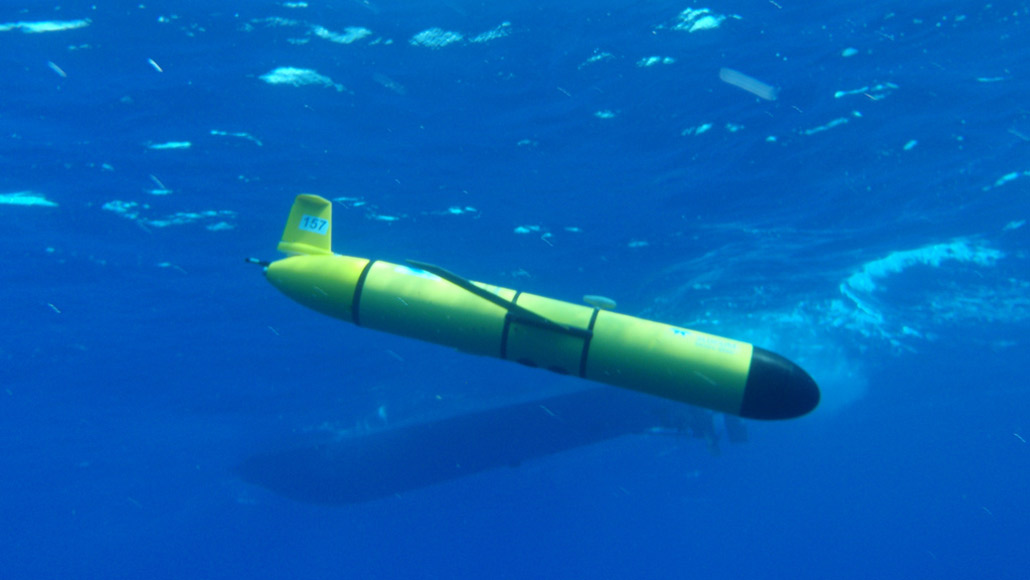
Moving slowly and stealthily through the Pacific Ocean, a robotic glider with a microphone captured a cacophony of sounds from ships, whales and underwater explosions.
The glider’s journey, across 458 kilometers off the Washington and Oregon coast and down to 650 meters, demonstrates that gliders could be effective tools to help map ocean noise levels, researchers report November 20 in PLOS ONE. Separate audio recordings from nearby microphones dangled from the water’s surface confirmed the accuracy of the glider’s 18 days of recordings in July and August 2012.
Stationary microphones can’t catch the full array of sounds throughout large swathes of sea or at various depths in the water column the way a glider can, though, the researchers say. Ocean noise is “something we need to measure and try to better understand why that’s happening, where it’s happening, and what the impacts are” to wildlife and marine ecosystems, says oceanographer Joe Haxel, at Oregon State University’s coastal campus in Newport. For example, previous research has shown that Navy sonar (SN: 3/25/11) and passing ships can create noise pollution that harms marine animals (SN: 2/13/18), impacting social behaviors and foraging habits.
Typically, scientists eavesdrop underwater with hydrophones, waterproof microphones that are moored or dangled from the surface, or mounted on large ships that can drown out other sounds and scare away marine life.
The glider’s slow speed — just over 1 kilometer per hour — and quiet movement allow it to sneak through the water picking up ambient noises. A pump moves oil in and out of the glider’s bladder, affecting its buoyancy and causing it to float up or sink down in the water column. Those depth changes propelled the glider forward on a slow, meandering path.
“The glider is good because it’s noninvasive,” says Haxel. “It’s coming in on stealth mode.”
Source: Heart - www.sciencenews.org



